15 Bagels Around The World (Photos)
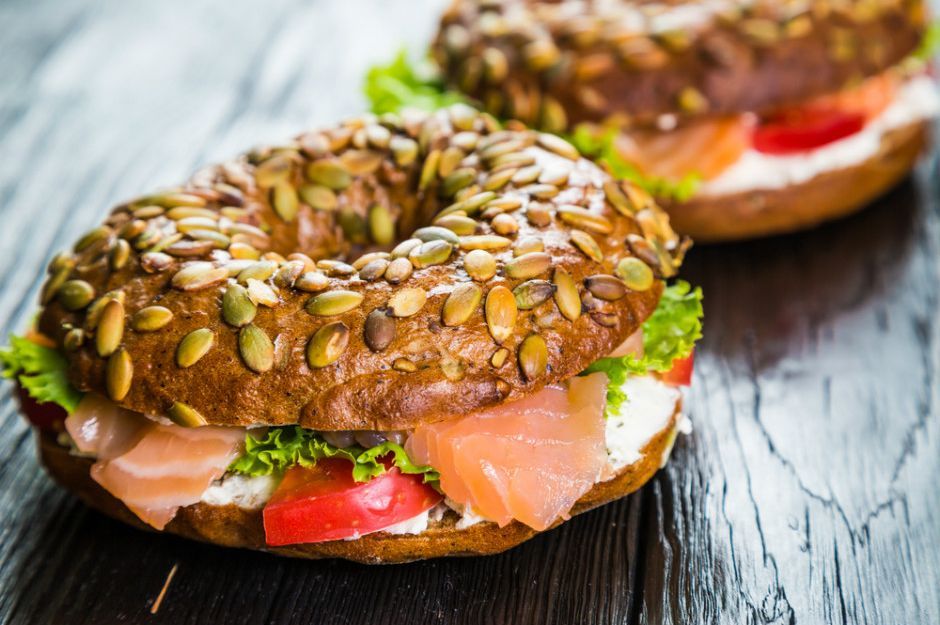
1. New York Bagel (USA)
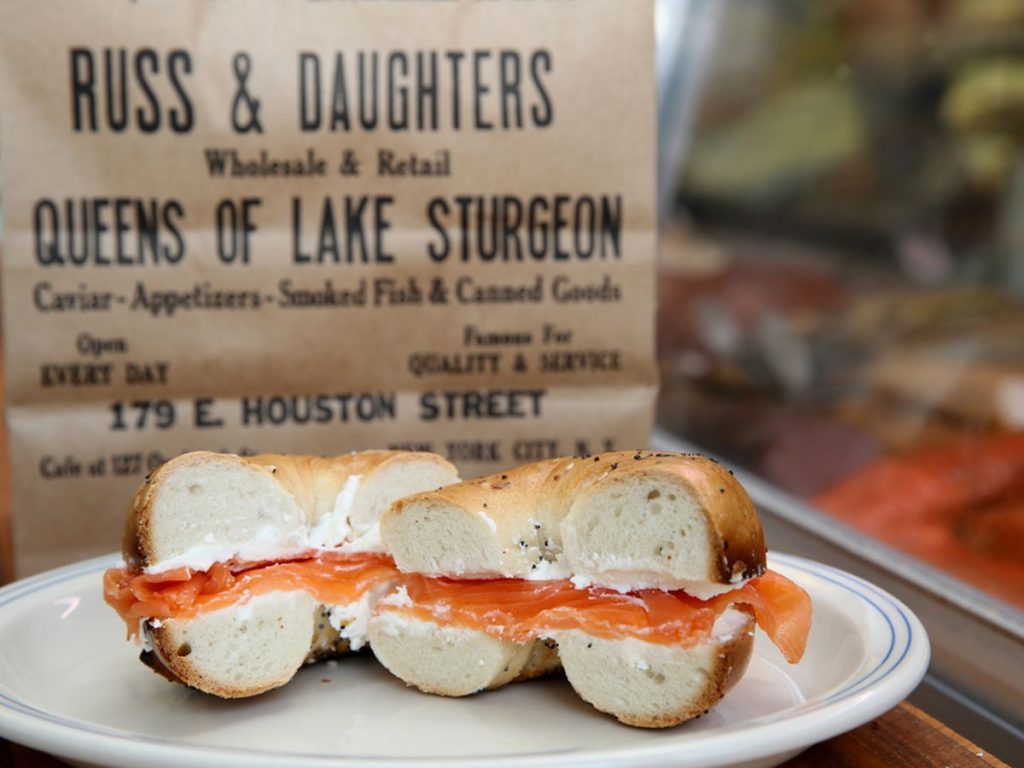
The New York bagel is the quintessential bagel known across the world, with its dense yet soft interior and crisp, golden-brown crust. The dough is made with high-gluten flour, yeast, salt, water, and malt syrup for a subtle sweetness. After being shaped into rings, the bagels are briefly boiled in water (sometimes with honey or malt added) before being baked, giving them their signature chewy texture. They’re larger and fluffier than most bagels from other parts of the world and come in a wide variety of flavors, including plain, sesame, everything, cinnamon raisin, and onion.
In New York City, bagel shops are often cultural institutions, with bagels being served fresh with cream cheese “schmears” and lox (cured salmon). The bagel became a symbol of New York Jewish-American cuisine in the early 20th century, but its popularity soon expanded across the U.S. and beyond. The “everything bagel” – topped with a blend of sesame seeds, poppy seeds, garlic, onion, and salt – has become particularly iconic.
2. Montreal Bagel (Canada)
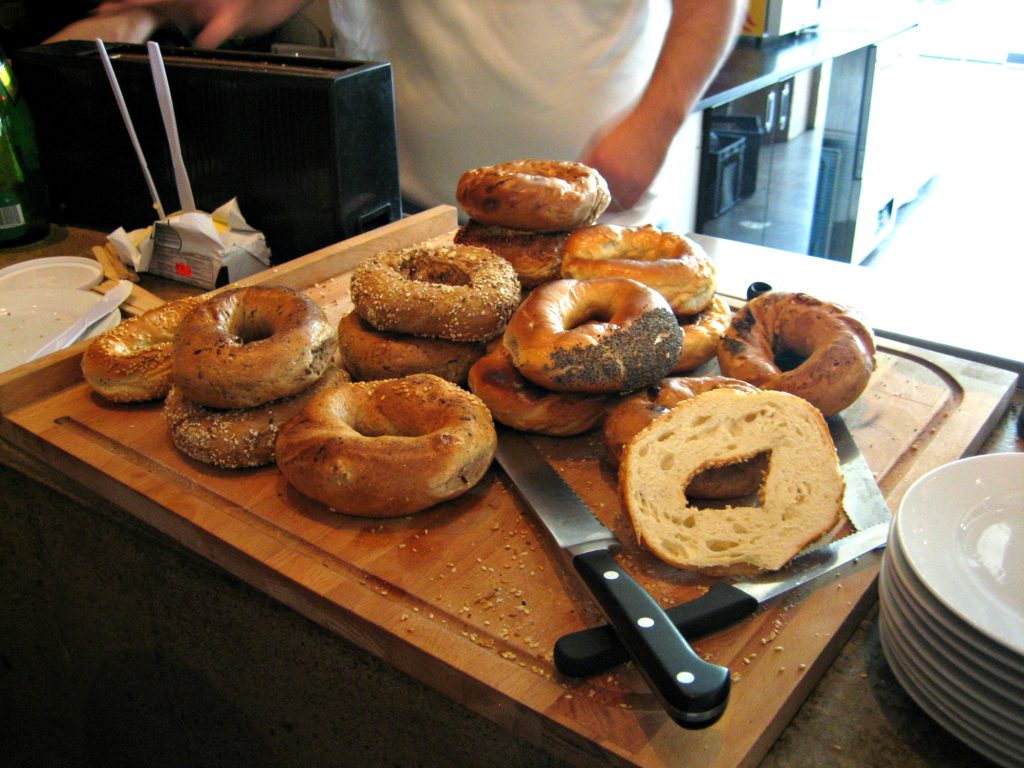
Montreal bagels are smaller, denser, and sweeter than their New York counterparts, with a distinct hole in the center that’s larger than most bagels. They’re made with a dough enriched with eggs and boiled in water sweetened with honey before being baked in a wood-fired oven, giving them a subtle sweetness and a slightly smoky flavor. They are traditionally coated with either sesame seeds or poppy seeds. Montrealers are passionate about their bagels, and bagel shops like Fairmount and St-Viateur have become iconic destinations.
Unlike New York bagels, which are soft and fluffy, Montreal bagels are known for their compact chewiness and rich, golden-brown crust. The wood-fired ovens are essential to the process, creating a unique charred and caramelized crust. While cream cheese and lox are common accompaniments to New York bagels, Montreal bagels are often enjoyed on their own, warm from the oven, or with a simple spread of cream cheese.
3. Jerusalem Bagel (Israel)
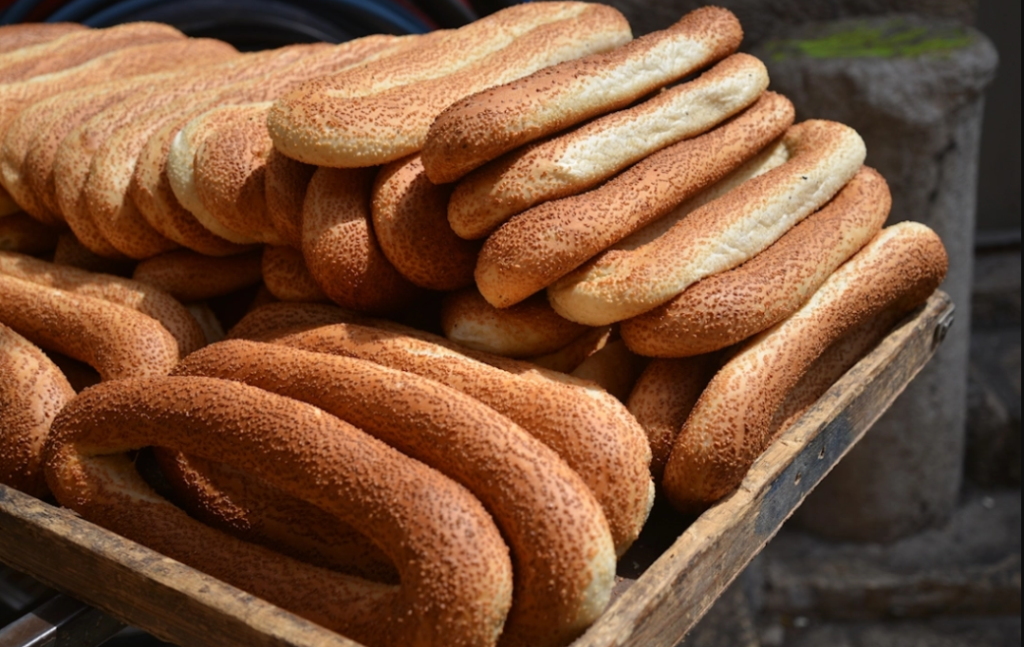
The Jerusalem bagel is an elongated, oval-shaped bread ring that’s larger and airier than traditional bagels. Made with a soft, slightly sweet dough and generously topped with sesame seeds, it’s commonly sold as street food in Jerusalem. These bagels are often served alongside za’atar spice mix or dipped in olive oil for added flavor. They’re typically served fresh and warm, and their soft, fluffy texture makes them distinct from their denser American counterparts.
This bagel variation is deeply tied to Middle Eastern baking traditions and is considered a staple in the markets of Jerusalem, especially in the famous Mahane Yehuda Market. The Jerusalem bagel’s distinct shape and texture make it versatile; it’s enjoyed as a savory snack or as part of a more elaborate meal. Unlike the classic bagel, it’s never boiled, giving it a lighter crust and a more tender crumb.
4. Simit (Turkey)
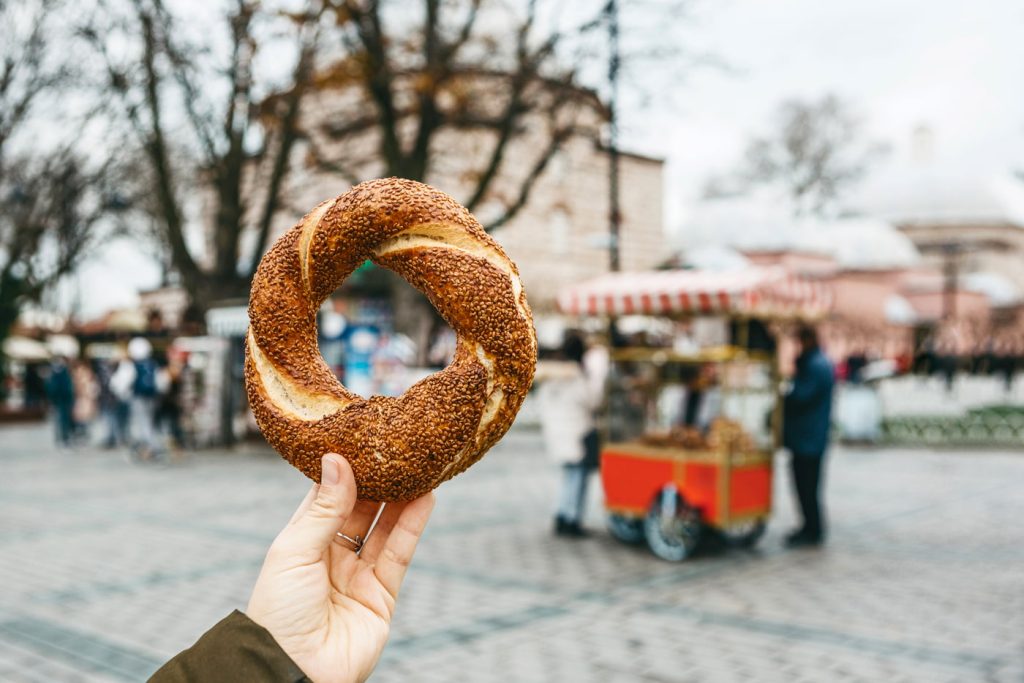
Simit is a beloved Turkish street food that’s often called a “Turkish bagel” due to its round shape and sesame seed topping. However, unlike bagels, simit is dipped in molasses before baking, which gives it a slightly sweet, caramelized crust. It has a crisp exterior and a soft, chewy interior. Simit is often sold fresh from carts on the streets of Istanbul and enjoyed with tea, cheese, and olives as part of a traditional Turkish breakfast.
The history of simit dates back centuries, with records of its consumption dating as far back as the Ottoman Empire. While sesame seeds are the traditional topping, some regional variations use poppy seeds, flaxseeds, or even sunflower seeds. Its simplicity and deliciousness have made simit a staple not only in Turkey but in neighboring countries such as Greece and the Balkans, where similar breads are also popular.
5. Bublik (Ukraine, Russia, Poland)
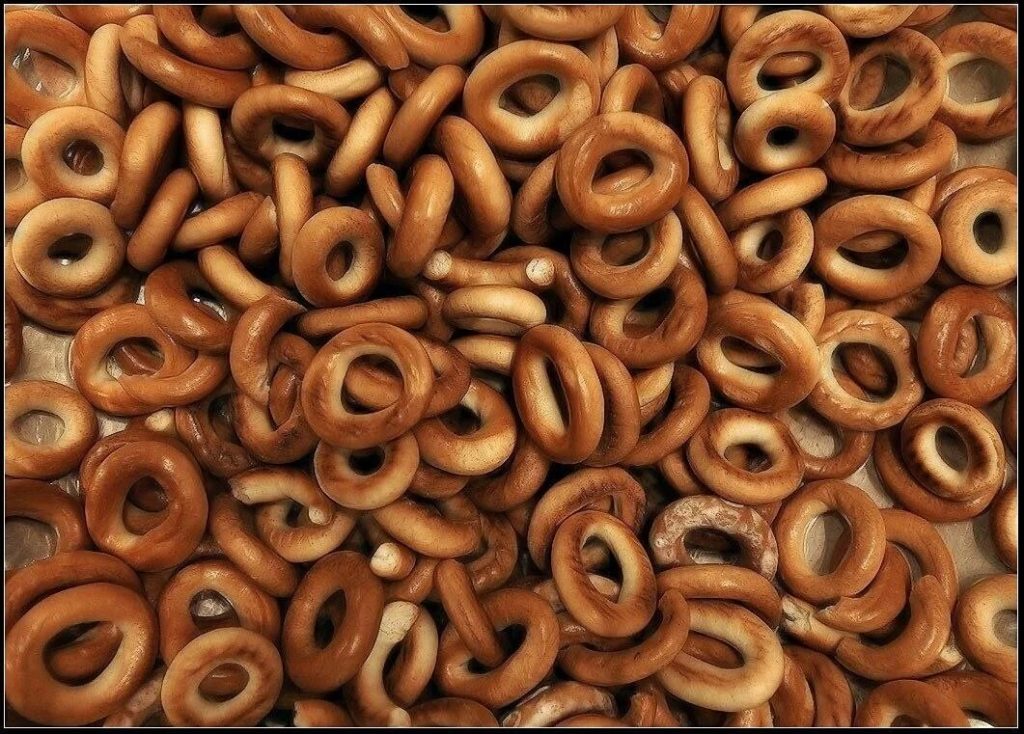
Bublik is a ring-shaped bread commonly found in Ukraine, Russia, and Poland. It’s larger and airier than a typical bagel and slightly sweet, thanks to the addition of sugar or milk in the dough. Bubliks are boiled before baking, like bagels, but they have a lighter, more bread-like texture. They are often topped with seeds such as poppy or sesame and can be enjoyed plain or as part of a meal.
Historically, bubliks have been associated with Jewish and Slavic cuisines and have long been a popular street food in Eastern Europe. They are often sold in bundles, tied together with string, and make for a filling snack when eaten on the go. Bubliks are also used in celebrations and gatherings, symbolizing good fortune and abundance.
6. Obwarzanek Krakowski (Poland)
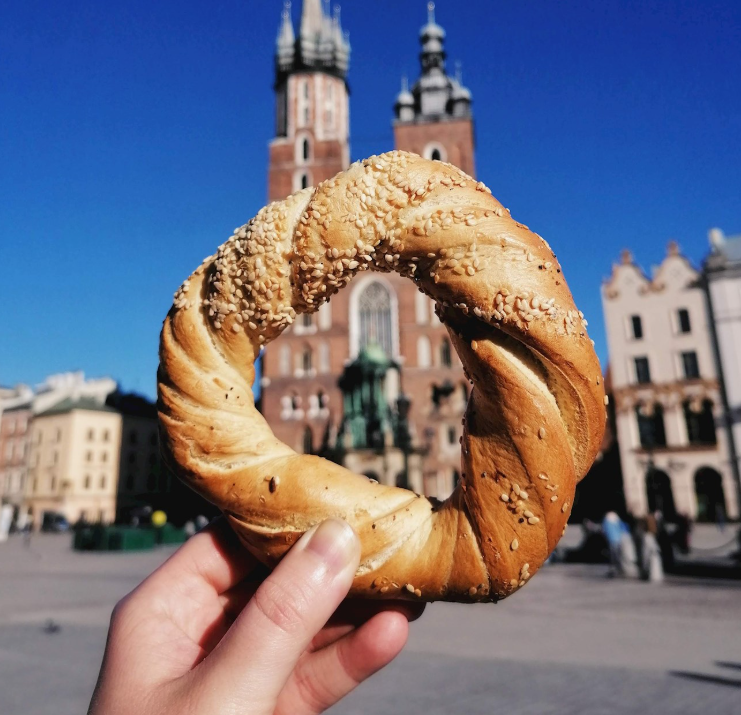
The Obwarzanek Krakowski is a traditional ring-shaped bread from Kraków, Poland, and is protected under EU geographical indication status. Unlike a standard bagel, it’s braided before being boiled and baked, giving it a distinct twisted appearance. It’s typically sprinkled with toppings like salt, sesame seeds, or poppy seeds and sold fresh from street vendors across Kraków.
The history of the obwarzanek dates back to the Middle Ages, where it was initially consumed as a Lenten bread. Today, it’s one of the city’s most iconic foods, beloved for its crunchy exterior and soft, chewy interior. Tourists and locals alike enjoy this street snack, which is often compared to a hybrid between a bagel and a pretzel due to its braided shape and slightly crispy crust.
7. Beugel (Austria)

The beugel is an old Austrian bread that predates the modern bagel and is believed to have influenced the bagel’s development. Made from a simple dough of flour, water, and yeast, beugels are boiled and baked but have a denser, more rustic texture than modern bagels. They’re typically plain or lightly salted.
Beugels were historically popular in Jewish communities in Austria and were often associated with special occasions. Unlike today’s fluffy bagels, beugels were tougher and more filling, designed to last longer and be portable. Though they’ve become rarer over time, some artisanal bakeries in Europe still make beugels using traditional methods.
8. Taralli (Italy)
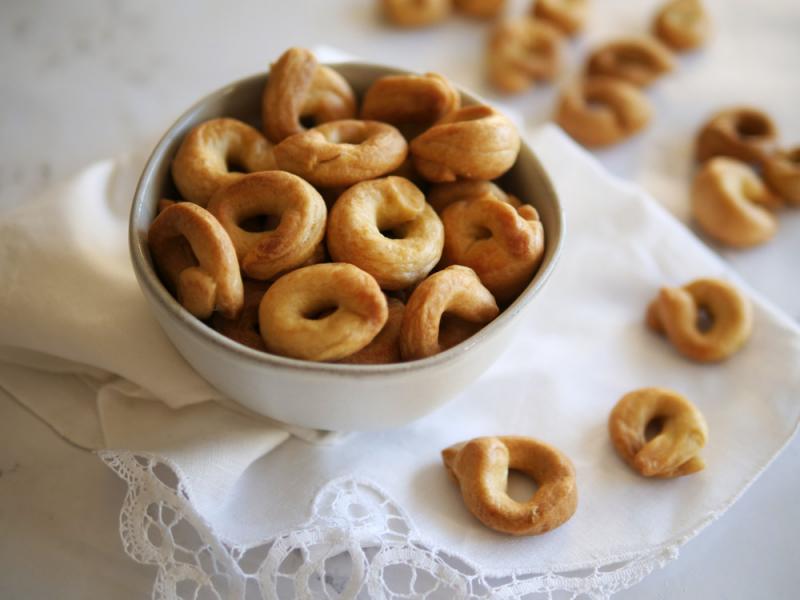
Taralli are small, crunchy, bagel-shaped snacks from southern Italy. Though they’re more like crackers than bagels, their circular shape and baking process make them worthy of comparison. Taralli can be savory or sweet, with popular flavors including fennel, black pepper, and garlic. Sweet versions may be glazed with sugar or flavored with anise.
Taralli are often served alongside wine or as a snack during celebrations. Their crunchy texture and addictive flavor make them a popular pantry staple in many Italian households. Unlike bagels, they’re not boiled before baking; instead, they’re sometimes briefly boiled after baking to achieve their characteristic crunch.
9. Koulouri (Greece)
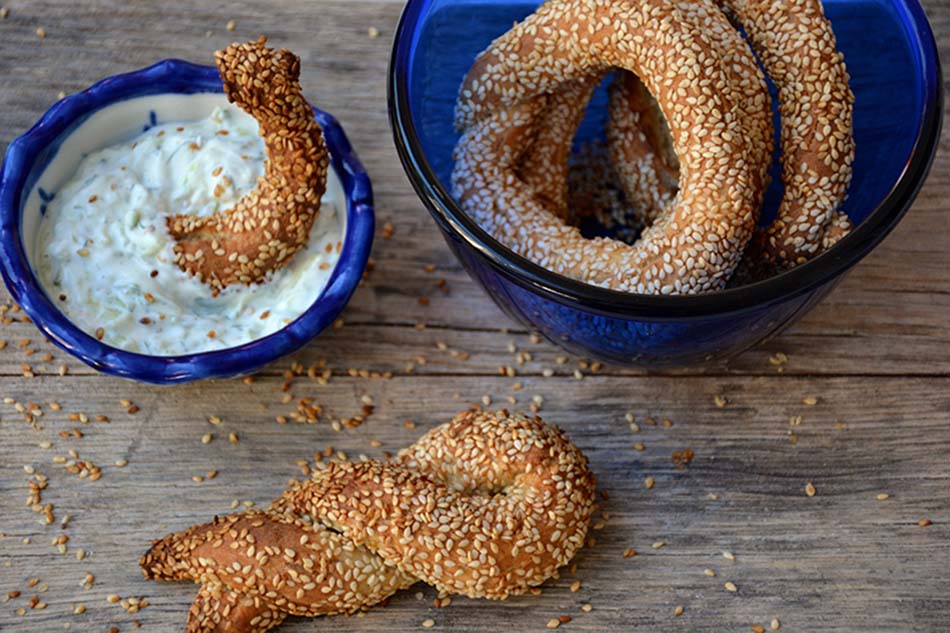
Koulouri is a Greek bread ring that’s similar to simit but thinner and crispier. It’s coated in sesame seeds and sold by street vendors as a breakfast snack or midday treat. Koulouri is commonly paired with coffee or tea and enjoyed plain or with a simple spread of cheese or jam.
In Greece, koulouri has a long history and is considered a traditional street food staple, particularly in Athens and Thessaloniki. Its thin, crispy crust and subtle sesame flavor make it a favorite for locals and tourists alike.
10. Sushki (Russia)

Sushki are small, bagel-shaped snacks that are crunchy rather than chewy. They’re typically sweetened and often enjoyed with tea. Sushki are much smaller than bagels, with a size closer to a bracelet than a bread ring.
These miniature snacks have been part of Russian tea culture for centuries and are often strung together on a string for decoration or easy storage. Their dense, dry texture makes them a satisfying accompaniment to hot beverages.
11. Pletzel (Eastern Europe)
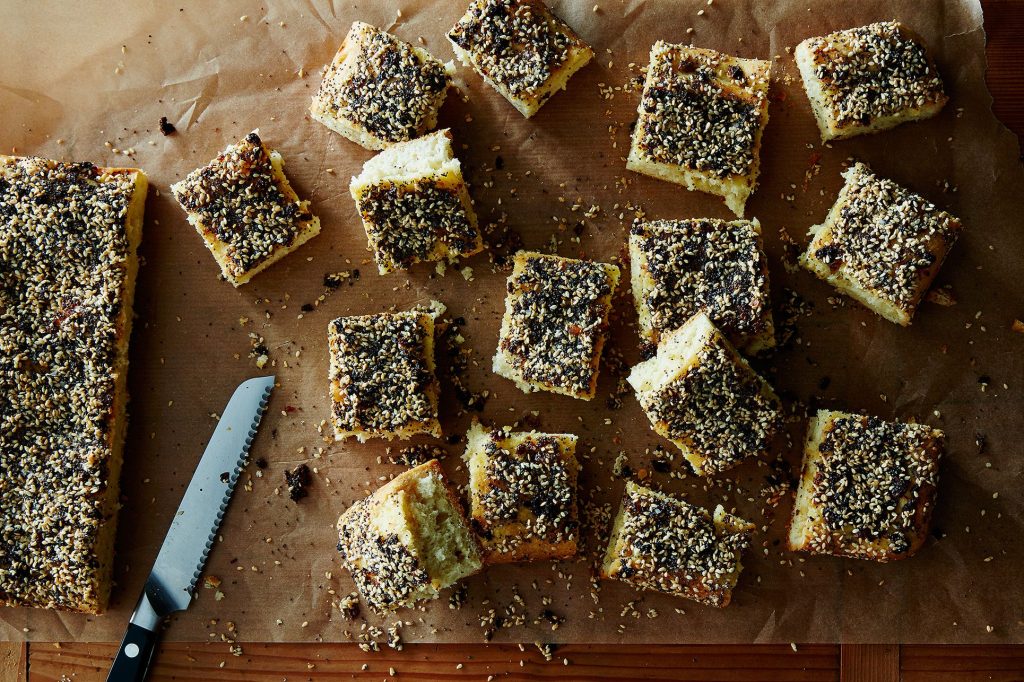
The pletzel is sometimes described as a “flat bagel” or “Jewish focaccia.” It’s a flatbread topped with onions, poppy seeds, and sometimes garlic or other savory ingredients. Unlike a typical bagel, the pletzel is not shaped into a ring but is instead spread flat and baked with toppings, giving it a crispy, golden surface. It has been a popular street food and bakery item in Eastern Europe, especially in Jewish communities.
Pletzels were often sold in Jewish bakeries and served as an affordable, flavorful snack. They’re sometimes served with cheese or smoked fish, though they are delicious on their own thanks to their savory onion topping. The pletzel is an example of how Jewish communities adapted simple doughs into delicious, hearty breads that could be enjoyed as part of a humble meal.
12. Bagelach (Israel)

Bagelach, also known as “mini bagels,” are small, bite-sized versions of bagels that are typically served as a snack or appetizer. They can be savory or sweet and are sometimes filled with poppy seed paste, cinnamon, or nuts. Unlike traditional bagels, bagelach are often softer and more pastry-like in texture, making them perfect for entertaining or holiday meals.
These miniature bagels are particularly popular during Jewish holidays, especially Purim, when sweet and savory pastries are traditionally served. Bagelach can also be found at bakeries across Israel, where they are enjoyed as a lighter alternative to full-sized bagels. Their versatility and delicious fillings make them a hit for gatherings or as a quick grab-and-go treat.
13. Kargı Tulum (Turkey)
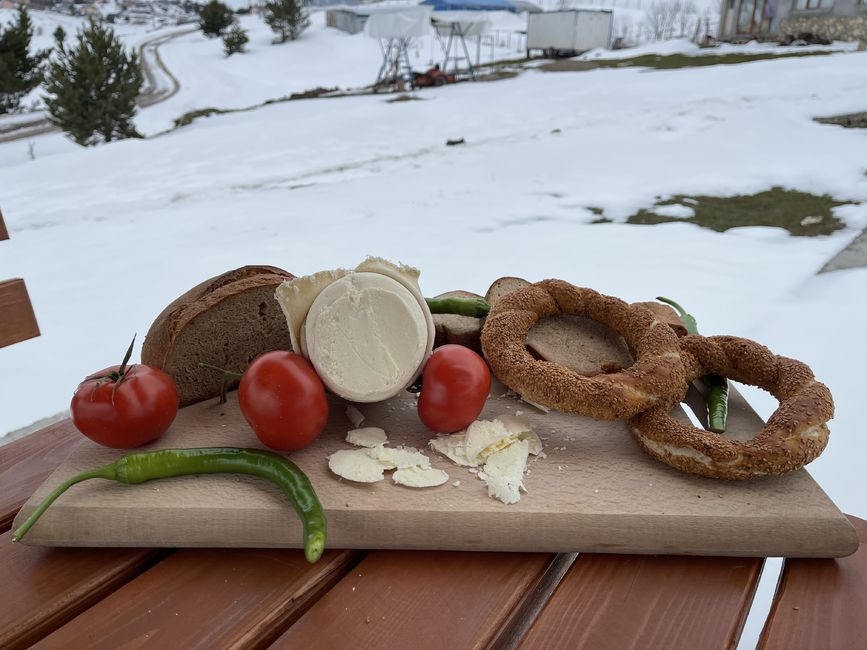
Kargı Tulum is a regional variation of simit from Turkey, known for its denser, more compact texture and thicker shape. This type of simit is often made in smaller, bakery-style portions and served as part of a traditional Turkish breakfast alongside cheese, olives, cucumbers, tomatoes, and tea. Its dense crumb and crispy sesame-coated exterior make it a filling and flavorful option for breakfast or a midday snack.
Unlike the classic simit found on Istanbul’s streets, Kargı Tulum tends to have a slightly more rustic, homemade feel, often with a more pronounced molasses flavor from the coating. It’s baked until deep golden brown, giving it a distinctive crunch that contrasts beautifully with creamy cheeses and spreads. This regional specialty highlights the diversity of Turkish bread culture.
14. Pretzel Bagel (Germany/USA)
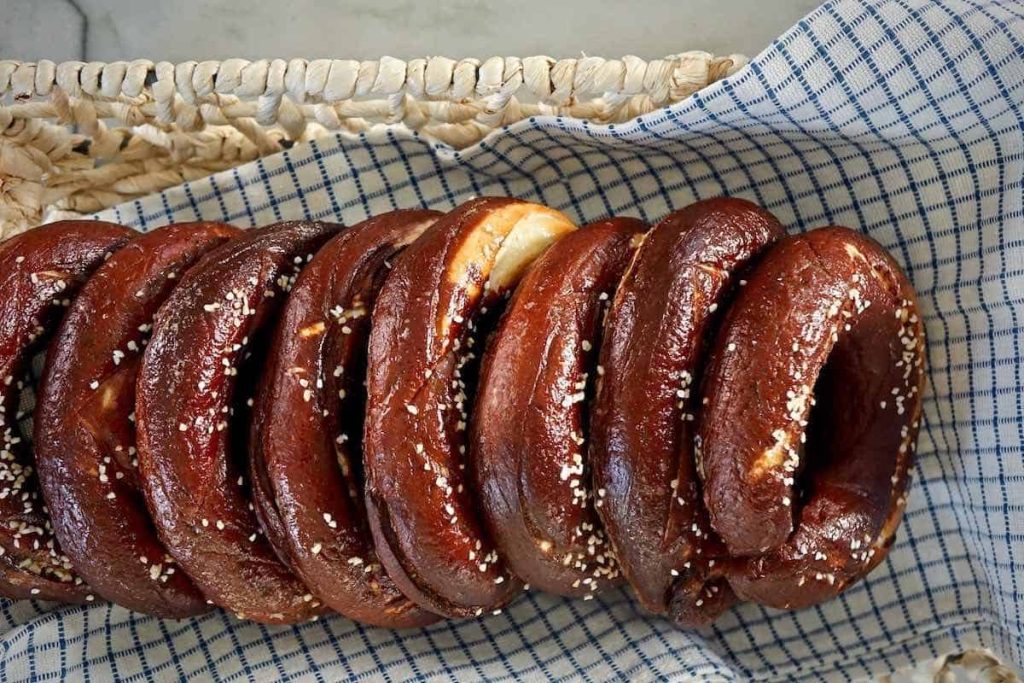
The pretzel bagel is a fusion between the soft pretzel and the traditional bagel, combining the chewy texture of a bagel with the dark, salty crust of a pretzel. Pretzel bagels are made with the same dough as a bagel but are dipped in an alkaline solution (usually baking soda) before baking, which gives them their signature brown color and slightly bitter, toasty flavor. They are often topped with coarse salt or seeds, just like a soft pretzel.
Pretzel bagels have become a popular twist on the traditional bagel in recent years, particularly in specialty bakeries in the U.S. They’re delicious on their own, slathered with mustard, or used as a base for sandwiches. This hybrid food is perfect for those who love the savory, malty flavor of pretzels but want the heartiness and shape of a bagel.
15. Kliņģeris (Latvia)
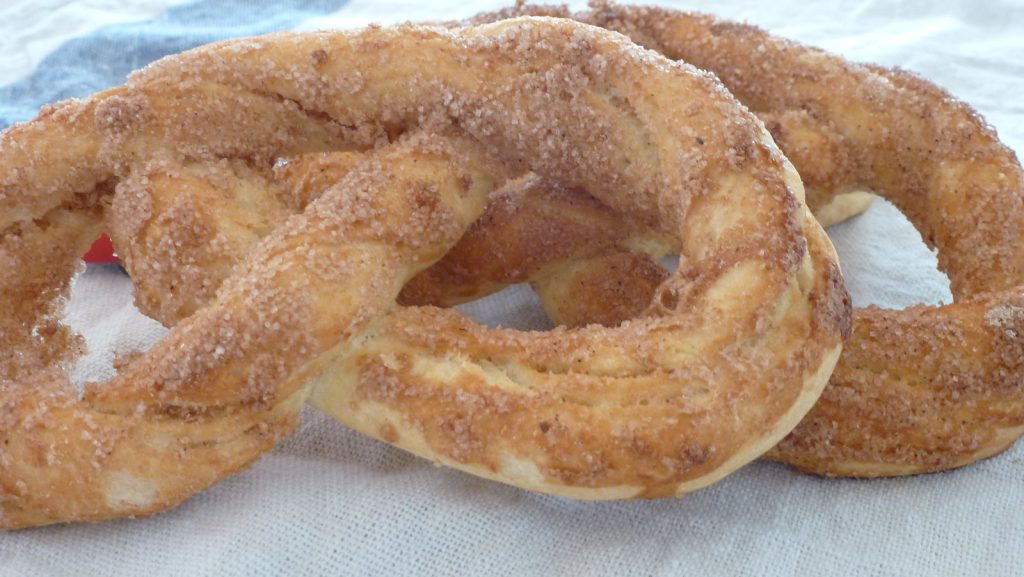
Kliņģeris is a large, ring-shaped celebratory bread from Latvia that is often served at weddings, birthdays, and other special events. Unlike bagels, kliņģeris is more like a sweet, enriched bread flavored with spices such as cardamom and cinnamon. It’s typically topped with almonds, raisins, or other dried fruits and glazed with a shiny sugar coating. The bread ring is braided or twisted into an elaborate wreath shape, making it visually stunning as a centerpiece.
This bread is not eaten as an everyday snack but is reserved for festive occasions. The symbolism of the ring shape represents continuity and celebration, making kliņģeris a meaningful addition to Latvian cultural events. Guests at celebrations often break pieces off the kliņģeris and enjoy it with coffee or tea, making it a communal and joyful treat.